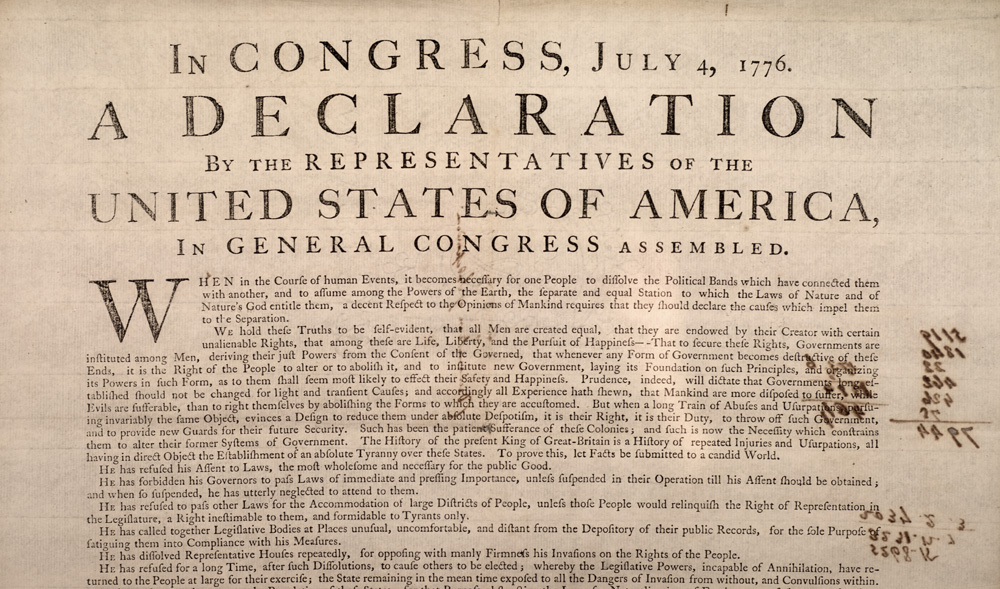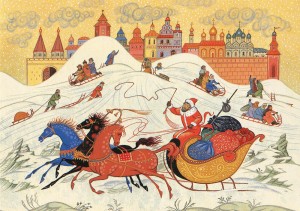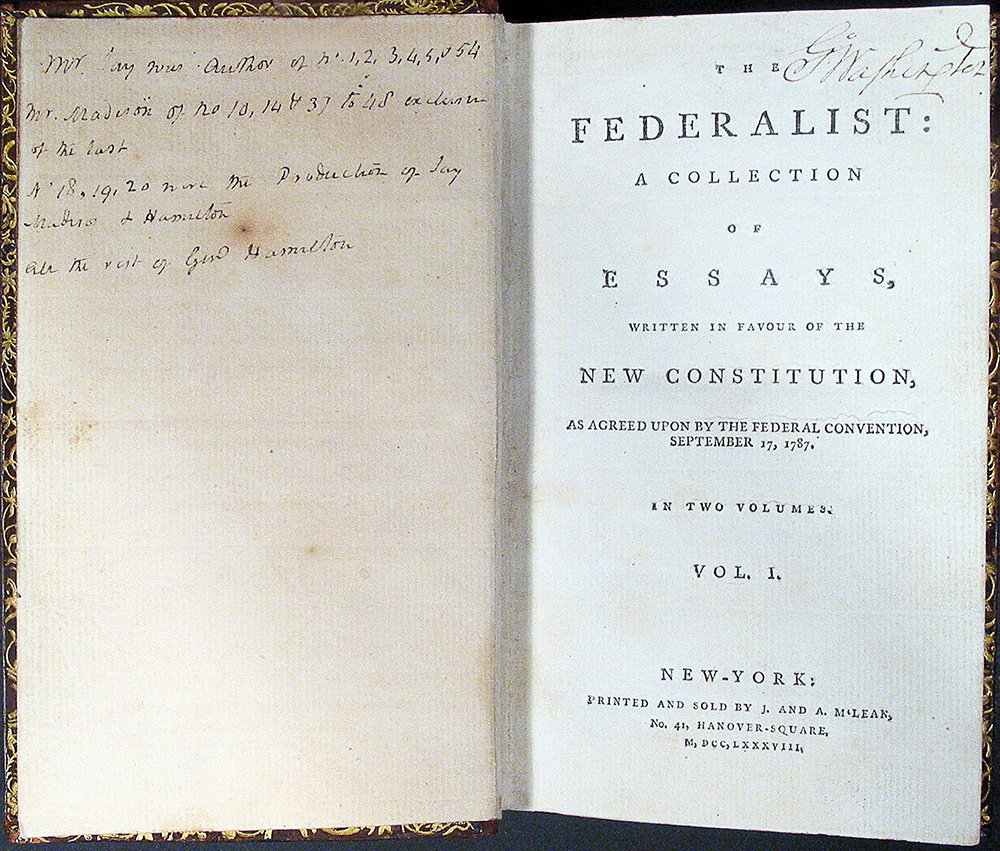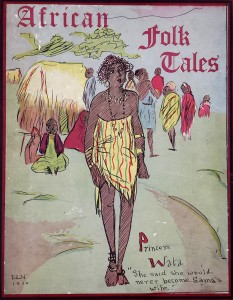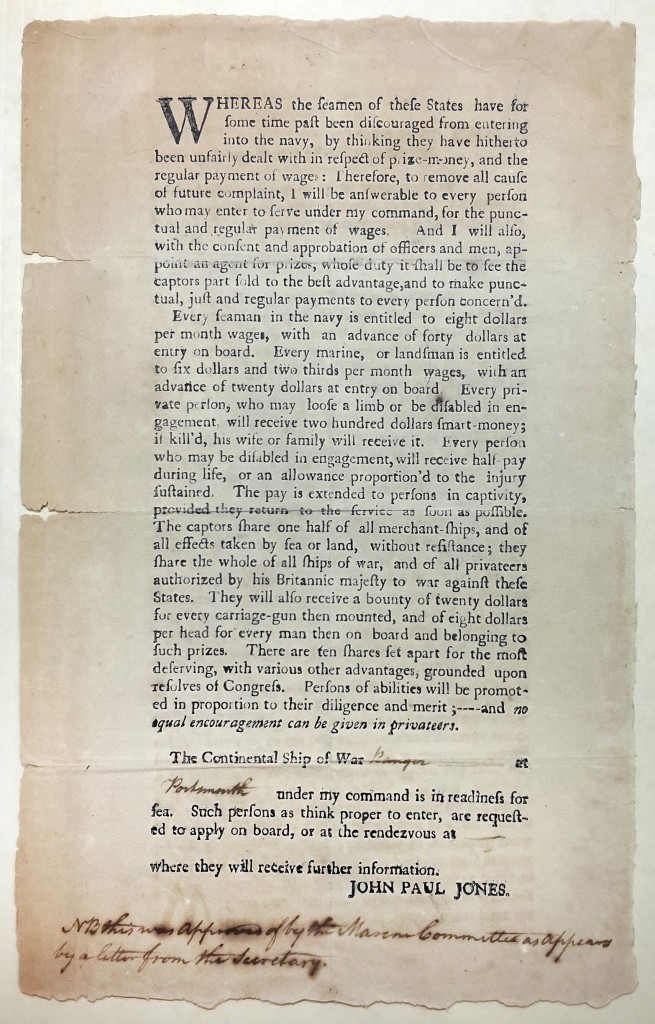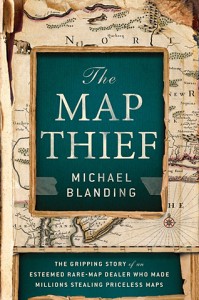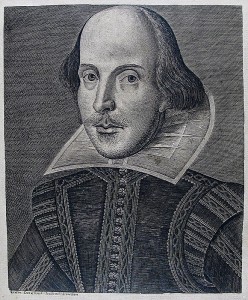This has been a good year for additions to the Chapin Library, both by gift and by purchase, as always in support of the work done by students and teachers at Williams, and following the purposes of our various funds. Here are only a few of the acquisitions made between July 2015 and June 2016, in no particular order:
Poems by Emily Dickinson. Boston: Roberts Brothers, 1890, 1891, 1896. First editions of all three series (volumes). Purchased on the W. Edward Archer and John S. Van E. Kohn, Class of 1928 funds.
Le Cuisinier moderne by Vincent La Chapelle. Seconde édition revue, corrigée et augmentée. La Haye: Aux dépens de l’auteur, 1742. A classic of French cuisine in five volumes, purchased on the Bruce and Alice Healy Fund.
The Warden by Anthony Trollope. London: Longman, Brown, Green and Longmans, 1855. A fine copy of the first edition. Purchased on the Mary L. Hurt Richmond Fund.
A Narrative of Five Youth from the Sandwich Islands, Now Receiving an Education in This Country. New York: Printed by J. Seymour, 1816. A rare pamphlet, “published by order of the agents appointed to establish a school for heathen youth”, which was directly responsible for accelerating the establishment of a mission school in Hawaii. Purchased on the Class of 1940 Americana Fund.
Laws of the Cherokee Nation Adopted by the Council at Various Periods, with The Constitution and Laws of the Cherokee Nation: Passed at Tahlequah . . . 1839–1851. Tahlequah, Cherokee Nation: Cherokee Advocate Office, 1852. Two parts in two volumes, bringing together the earliest written laws of the Cherokees, all the constitutions, and the laws after Removal. Purchased on the Class of 1940 Americana Fund.
Claims of the Jews to an Equality of Rights, Illustrated in a Series of Letters to the Editor of the Philadelphia Gazette, by Isaac Leeser. Philadelphia: Printed by C. Sherman & Co., 1841. A republication in book form of Leeser’s response of 1828 in the Richmond Whig to an attack on the Jews which had appeared in the London Quarterly Review. Purchased on the Class of 1940 Americana Fund.
A manuscript sharecropping agreement from 1868, made between a white Virginia plantation owner and three African-American freedmen. Purchased in support of a student paper on agriculture by former slaves during Reconstruction, on the Class of 1940 Americana Fund.
Hand-made Fables by George Ade. New York: Doubleday, Page, 1920. An inscribed copy, purchased with ten typed letters signed and an autographed manuscript page, all by the noted American humorist of whose works the Chapin Library has a significant collection. Purchased on the W. Edward Archer Fund.
American Entomology, or Descriptions of the Insects of North America by Thomas Say. Philadelphia: Samuel Augustus Mitchell, 1824-1825. Three volumes. The first edition of Say’s pioneering work, purchased on the Tobias Cabot Fund for Natural History.
Official List of Officers Who Marched with the Army under the Command of Major General Winfield Scott, from Puebla upon the City of Mexico . . . and Who Were Engaged in the Battles of Mexico. Mexico: American Star Print, 1848. An account printed on the occupying American army’s own press, including the plan of the battles in the vicinity of Mexico City. Purchased on the Class of 1940 Americana Fund, as an adjunct to a large colored lithographic print and an original key drawing to the print given this year by, respectively, the Stanton E. and M. Elaine Tefft Foundation, and late Stanton E. Tefft, Williams Class of 1947, and the Marie Elaine Tefft Revocable Trust.
Parentalia, or, Memoirs of the Family of the Wrens by Christopher Wren. London: T. Osborne and R. Dodsley, 1750. The chief sources of the life of English architect and scientist Christopher Wren, compiled by his son and namesake. Purchased on the W. Edward Archer Fund.
A Brief View of the Conduct of Pennsylvania, for the Year 1755, So Far As It Affected the General Service of the British Colonies, Particularly the Expedition under the Late General Braddock. London: Printed for R. Griffiths . . . and sold by Mr. Bradford in Philadelphia, 1756. The first edition of a noted response to Quaker pacifism after General Braddock’s defeat during the French and Indian War. Purchased on the Class of 1940 Americana Fund.
The Variation of Animals and Plants under Domestication by Charles Darwin. London: John Murray, 1868. Two volumes. The first edition, first issue of the work in which Darwin gathered facts concerning artificial selection of traits to demonstrate an analogy for natural selection, and in which he advanced a hypothesis of the inheritance of characteristics. Purchased on the Tobias Cabot Fund for Natural History.
Poems by Eminent Ladies, edited by Bonnell Thornton and George Colman. London: Printed for R. Baldwin, 1755. Two volumes. The first edition of the first major anthology of poetry by women in English, a cornerstone for women’s studies in the 18th century. Purchased on the W. Edward Archer Fund.
The Silkworm: A Poem by Marcus Hieronymus Vida. Translated by the Reverend Samuel Pullen. Dublin: Printed by S. Powell for the Author [i.e. translator], 1750. Pullen’s interest in the introduction of silk cultivation into the American (Caribbean) colonies was fueled by family connections with Jamaica. Purchased on the W. Edward Archer Fund.
Sketches in Architecture by John Soane; with Six Designs for Improving and Embellishing Grounds by G.J. Parkyns. London: Messrs. Taylor, 1793. Two works bound together as issued, with plans for country cottages and picturesque estates. Purchased on the Mary L. Hurt Richmond Fund.
A Chronological History of North-eastern Voyages of Discovery, and of the Early Eastern Navigations of the Russians by James Burney. London: Printed by Luke Hansard & Sons . . . for Payne and Foss . . . and John Murray, 1819. The first edition of a scarce work on Pacific exploration, including a first-hand account of the death of Captain Cook. It is supplemental to Burney’s great five-volume chronological history of discoveries in the South Seas, which was already in the Chapin Library. Purchased on the W. Edward Archer Fund.
The Manifesto by Jose acute Figueroa. San Francisco: Herald Office, 1855. The first English-language edition of Figueroa’s defense of his conduct in a colonization plan for California in the 1830s, made from the “commandant-general and political chief” of California to the Mexican Republic. Purchased on the Class of 1940 Americana Fund.
The Laws of Contrast of Colour and Their Application to the Arts of Painting, Decoration of Buildings [etc.] by M.E. Chevreul. Translated by John Spanton. London: George Routledge & Sons, 1859. The third edition of the Spanton translation of one of the landmark works on color theory. Purchased on the Mary L. Hurt Richmond Fund.
Outfits for a Whaling Voyage. [New Bedford, Massachusetts: H.S. Kirby, circa 1858]. A printed list of supplies, annotated throughout by William W. Thomas, master of the bark Joseph Grinnell detailing supplies purchased for a whaling voyage to the Pacific. Purchased on the Class of 1940 Americana Fund.
A collection of more than 190 photographs of Theodore Roosevelt by Underwood and Underwood, most from Roosevelt’s presidency but a few from his 1898 Rough Rider days at Montauk Point, Long Island. The Chapin Library has a significant collection of items by and about Roosevelt, a friend of Mr. Chapin in the New York State legislature. Purchased on the Class of 1940 Americana Fund.
Cope’s Tobacco Plant. Liverpool: Cope Brothers, 1870–1881. Three volumes, a complete run of this periodical regarding tobacco; from the Arents library. Its main significance to the Chapin Library is in contributions by American poet Walt Whitman. Purchased on the W. Edward Archer Fund.
Mineralogia Cornubiensis by William Pryce. London: James Philips, 1778. An important work on geology and mining in Cornwall. Purchased on the W. Edward Archer Fund.
A manuscript document detailing the results of an inquest held at Southampton, Long Island, on June 6, 1681, with the names of some of the earliest English settlers. Purchased on the Thomas A. Frank, Class of 1963 Fund.
Six to seven hundred magazines and other printed items related to Frank Lloyd Wright, his buildings, and his apprentices. The gift of Larry Martyn, who was himself an apprentice to architect Wright, this collection complements the earlier Frank Lloyd Wright library given to the Chapin Library by Robert Fordyce, Class of 1956.
A Civil War soldier letter, April 20, 1865, commenting on Lincoln’s assassination (“hanging is considered . . . too good for the perpetrators”), on contrabands, and on the future of the Army of the Potomac. Purchased on the W. Edward Archer Fund.
Some two hundred issues of Frank Leslie’s Illustrated Newspaper, rival to the better-known Harper’s Weekly, from the Civil War years 1861–1864. Purchased on the Class of 1940 and W. Edward Archer funds.
Zum ewigen Frieden by Immanuel Kant. Königsberg: Friedrich Nicolivius, 1795. The first edition, first issue of Kant’s essay on perpetual peace, given to the Chapin Library by Bruce M. Russett, Class of 1956.
Vestigi delle antichita di Roma Tivoli Possuolo e altri luochi con privilegio di sua Sac. Caes. Mae. Prague: Aegidius Sadeler, 1606. The first edition, first issue of Sadeler’s book of engraved views of Roman antiquities. Purchased on the W. Edward Archer Fund.
Reports of the Metropolitan Park Commission for Massachusetts. Boston, 1893–1919. Includes twenty-six annual reports in twenty-seven volumes, a complete run of this work, of great importance to historians of American city planning and landscape architecture. Purchased on the Class of 1940 Americana Fund. – WGH
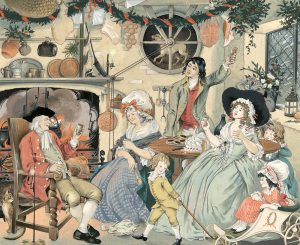 A small display of original art for Christmas and the winter season painted by Pauline Baynes is on view through December in the Special Collections Instruction Gallery, Sawyer Room 408, Monday through Friday, 10:00 a.m. to 5:00 p.m. Baynes (1922–2008), a prolific artist and designer, is best known as the illustrator of the “Narnia” books by C.S. Lewis and of works by J.R.R. Tolkien. Her archive and working reference collection are in the Chapin Library and available for use in the Special Collections Reading Room. The art now on exhibit was made in the 1950s and 1960s mostly for Christmas numbers of magazines, such as Holly Leaves and the Illustrated London News, or for Christmas cards, and was recently acquired on the Pauline Baynes Archive Fund. – WGH
A small display of original art for Christmas and the winter season painted by Pauline Baynes is on view through December in the Special Collections Instruction Gallery, Sawyer Room 408, Monday through Friday, 10:00 a.m. to 5:00 p.m. Baynes (1922–2008), a prolific artist and designer, is best known as the illustrator of the “Narnia” books by C.S. Lewis and of works by J.R.R. Tolkien. Her archive and working reference collection are in the Chapin Library and available for use in the Special Collections Reading Room. The art now on exhibit was made in the 1950s and 1960s mostly for Christmas numbers of magazines, such as Holly Leaves and the Illustrated London News, or for Christmas cards, and was recently acquired on the Pauline Baynes Archive Fund. – WGH